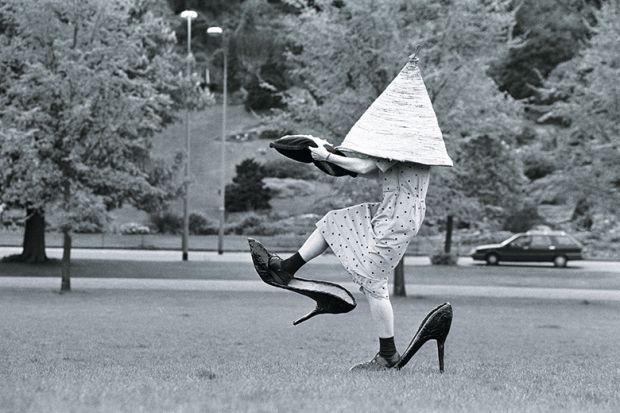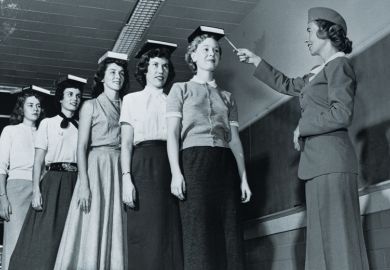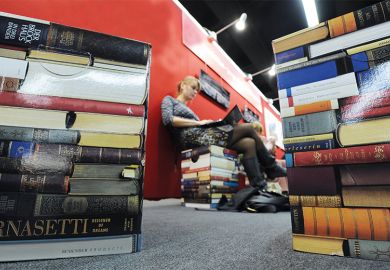Starting to teach in higher education was daunting. My initial concerns were mainly about PowerPoint presentations. It did not occur to me to question the overall structure of what I was doing, nor to ask where it fitted into much greater expectations about learning and assessment.
Several years later I would meet a severely disabled student who would bring me up short. My new student could not write or type responses to assessment questions, nor raise her hand to contribute in class. She required regular breaks, a respirator and 24-hour support. She asked only one thing of me: please could I make sure she did not have to sit exams. Of course, I said; no problem.
Then questions came to me thick and fast: how could I make sure I was assessing the same things? How could I make it fair and comparable? If I was changing things for one student, did I need to offer the choice to all students? Could we just give this student lots and lots and lots of extra time?
I had to quickly understand the wider assessment context in order to make sensible decisions.
One of the issues is modular teaching. Well-intentioned academic staff understandably guard their territories and earnestly assess everything they teach; but, for students, this presents an overwhelming burden of assessment and bunched deadlines. The sheer quantity of assessment can exacerbate existing mental health problems and provoke new ones.
The determination to assess everything is inadvertently supported by reasonable adjustments, the 2010 Equality Act’s requirement to level the educational playing field for disabled students. The problem with adjustments is that they are by nature reactive. They are also potentially arbitrary: my own student received 50 per cent additional time in exams at A level but 100 per cent additional time as a first-year undergraduate.
It is worth noting the role secondary education plays in preparing students for assessment and how wedded to familiar assessment approaches our students will be. In the UK, as A levels move towards more exams, the use of coursework tasks becomes more challenging. International students, many of whom are not rehearsed in coursework, are already disadvantaged in the coursework and exam model.
Then there is the fact that sitting still for three hours in silence, without the internet or social media, while being watched over, is anathema to Generation Z. In what world will these students take jobs where they have no opportunity to quickly check online for things they don’t understand? Having asked myself whether my own students need to be able to memorise terminology on sociolinguistics and recall it under timed conditions, I have removed all exams from my modules completely. Of course I realise this will not apply in, say, medicine where competence standards require a demonstration of speed.
Spare a thought for the lecturers and tutors for whom the existing stop-to-assess model means that twice a year we turn away from learning and towards assessment, as if the two are unrelated. The marking workload is exhausting.
By assessing more purposefully it is possible to lift each of these weights from higher education. The first question should be: what are we assessing for? Turn to the literature on assessing for learning and see how assessment can play a dynamic, engaging role in the life of our students. The transition to undergraduate study is the perfect place to encourage students to leave behind the models of assessment they experienced at school. This is higher education: it’s different, it’s better.
This does not mean we stop assessing or that we do not check understanding. Quite the opposite. We can introduce a range of formative points where students gather feedback that does not affect degree classifications and teachers can retain an overview of each individual’s progress without the constraints of anonymised marking.
Use assessment to get students accustomed to having their work reviewed by their peers – much as it will be in the workplace – and offer all students the chance to see where their own understanding sits in respect of other students. Use assessment as a teaching tool.
The matter of classifications can be addressed through well-defined summative tasks: rich and engaging pieces of synoptic student work that draw together understanding from across their programmes. Summative pieces that lead easily through a process of supportive formative feedback to a polished final display of understanding.
More than anything, this approach to assessment will prepare our graduates for the workplace and help them develop approaches to learning that they can use over and over again. It is fair, interesting and inclusive. We should stop trying to level the playing field and start engaging with the varied landscape.
Ruth Payne is an associate professor in student education and lecturer in linguistics at the University of Leeds.
POSTSCRIPT:
Print headline: Making assessment inclusive
Register to continue
Why register?
- Registration is free and only takes a moment
- Once registered, you can read 3 articles a month
- Sign up for our newsletter
Subscribe
Or subscribe for unlimited access to:
- Unlimited access to news, views, insights & reviews
- Digital editions
- Digital access to THE’s university and college rankings analysis
Already registered or a current subscriber?








